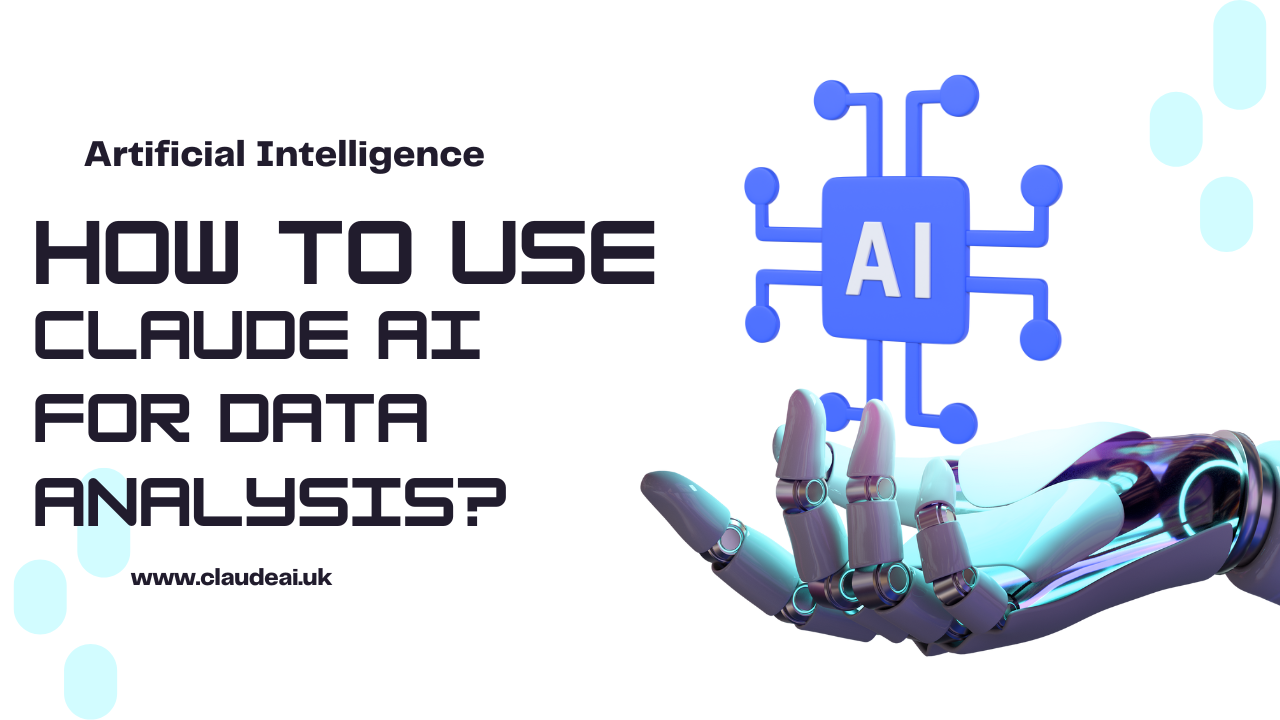Claude AI is an advanced artificial intelligence assistant created by Anthropic to be helpful, harmless, and honest. It utilizes state-of-the-art language models to understand natural language prompts and provide useful responses.
Claude can be a powerful tool for data analysis, able to process large datasets, identify insights, and communicate findings in an understandable way. This guide will walk through the key capabilities of Claude for data analysis and provide actionable tips on leveraging its strengths.
Data Loading and Preparation With The Help Of Claude AI
The first step in any data analysis project is loading and preparing the data. Claude makes this easy with built-in functionality to ingest common file types like CSVs, Excel, JSON, and SQL databases. Simply upload or link your data source and Claude will automatically detect headers, data types, and schemas. Once loaded, you can ask Claude to clean and transform the data so it’s ready for analysis. Useful commands include:
- “Remove duplicate rows”
- “Handle missing values using imputation”
- “Encode categorical variables”
- “Standardize numeric columns”
- “Create new columns based on conditions”
- “Aggregate the data by a category”
With a few simple prompts, you can have Claude manipulate large datasets to be correctly shaped and ready for modeling. This removes much of the tedious preprocessing work that usually bogs down analysis projects.
Exploratory Data Analysis
The next step is understanding the patterns in your data through exploratory analysis. Claude simplifies the process with natural language commands for univariate, bivariate, and multivariate analysis:
Univariate analysis:
- “Plot a histogram of customer ages”
- “Describe the distribution of transaction amounts”
- “Show summary statistics for the num_items column”
Bivariate analysis:
- “Create a scatter plot with product price on x-axis and sales quantity on y-axis”
- “Calculate the correlation coefficient between yearly_income and account_balance”
- “Pivot the data and show purchases by customer gender”
Multivariate analysis:
- “Use pairwise plots to check relationships between several numeric columns”
- “Generate groups with clustered bar charts based on product, age, and region”
- “Summarize transactions by state and product category in a pivot table”
Claude will generate relevant graphs, statistics, and summaries allowing you to establish data dimensions, Variable relationships, and form analysis hypotheses. The natural language interface makes it simple to explore different cuts of the data.
Model Development
Once the exploratory phase is complete, Claude’s advanced capabilities really become clear as you develop predictive and inference models. The same natural language patterns apply but now you can build, compare, and refine complex model architectures. For example:
- “Build a random forest model to predict customer churn using demographic and transaction variables”
- “Create a neural network for price prediction and compare its accuracy to linear regression”
- “Use a decision tree classifier to categorize customers as high or low value”
Claude’s machine learning knowledge removes the need to tweak model hyperparameters or carefully construct feature pipelines. It handles best practice tasks like cross-validation, regularization, and dimensionality reduction automatically. You get state-of-the-art model performance without coding or data science expertise.
And as models are built, Claude explains each step and provides metrics to assess against business objectives. Interactive visualizations make it easy to diagnose model limitations and submit refinements like:
- “Increase model sensitivity to reduce false negatives”
- “Improve specificity by 10% to lower incorrect fraud predictions”
- “Balance precision and recall because we want high coverage and accuracy”
This transparency helps models evolve efficiently towards organization goals.
Model Implementation
The final step is putting finished models to work through real-time predictions. Claude makes this transition easy by providing standalone model endpoints and code snippets for integration.
A simple command like “Deploy this classification model via API” generates a production-grade interface including:
- Prediction triggers by direct function calls or POST requests
- Dynamic documentation and sample inputs
- Data validation and schema checks
- Monitoring, analytics and usage tracking
For more custom implementations, Claude produces Python and R code templates to score data locally. The prepackaged functions only require connecting raw inputs to start generating predictions. No coding or DevOps work needed.
This frictionless path from modeling to production deployment lets your team focus efforts on extracting business value vs building operational capabilities.
Tips for Effective Data Analysis with Claude
- Frame prompts around business questions – Claude will determine appropriate techniques instead of requiring explicit statistical requests.
- Provide Column Descriptions – enriching the data schema helps Claude select optimal analysis methods
- Give Examples – walk through sample observations to illustrate the task objective and clarify domain language
- Set Expected Outcomes – defining project goals and targets focuses Claude’s efforts
- Use Visual Feedback – leverage Claude’s graphs and metrics to quickly diagnose limitations and submit refinements
- Monitor Across Dimensions – review findings segmented by subgroups to check for consistency and bias
- Maintain Skepticism – critically evaluate all conclusions through sanity checks before applying findings
By anchoring analysis in organizational knowledge and allowing Claude AI to handle the technical details, you get rapid turnaround on critical business questions with understandable, trustworthy results.
Conclusion
This guide covered using Claude AI for end-to-end data analysis – from ingesting raw data to extracting business insights to operationalizing analytical models. The natural language interface and integrated machine learning capabilities remove the need for specialized technical skills or coding to conduct advanced analytics.
Companies looking to enhance decision making through data-driven insights can leverage Claude AI to accelerate development cycles and start producing high-impact results in days instead of months. With Claude’s unique combination of power, simplicity and transparency, anyone can tap into cutting edge techniques to solve their pressing analytical problems.

